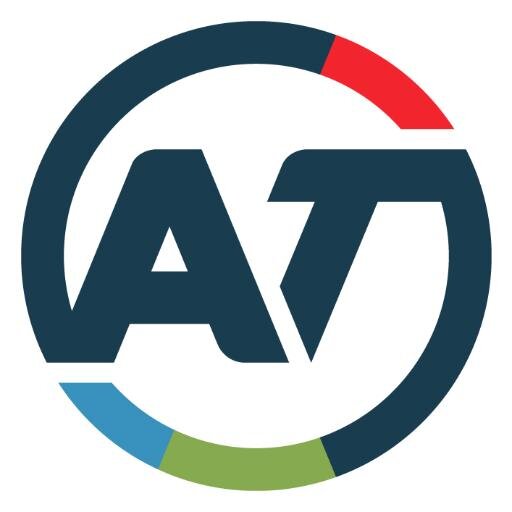
‘Martyn Bradbury’s comparing Auckland International Airport’s traffic chaos traffic chaos to the National-led Government is even more apposite than what he is suggesting. Actually National – especially figures like Bill English & Simon Bridges – by obstructing the agreed rapid rail solutions laid down by the Southwest & Airport Multi-Modal
Working Party in 2010-11, via NZTA and its creature Auckland Transport the board of which is packed with its members & supporters – is directly responsible for the growing traffic chaos which is now gone way past causing stress and annoyance to travellers – but is now causing major economic damage.
When the mayor and the prime minister, launched the construction of the City Rail Link (CRL) before a euphoric crowd and performing dancers on that gorgeous morning in June, one would have assumed that this historic moment heralded a bright new era for rail in Auckland. But if so one would have assumed wrongly; for it soon became clear that the government, reluctantly log-rolled by Auckland public opinion into supporting the CRL, is determined that the CRL will be the last major project in Auckland’s 20-year rail renaissance.
This became all-too-clear a couple of week’s later when the board of the NZ Transport Agency (NZTA) in Wellington voted to support a raft of resolutions that specifically excluded route protection and ‘any further option development’ of a rail connection to Auckland International Airport. A couple of weeks later the board of Auckland Transport (AT), marching in lock-step followed suit.
Deliberately excluding route protection for future rail to the airport is one of the most irresponsible planning decisions I have witnessed during my time in Auckland local government.
Auckland International Airport is of critical economic importance to Auckland and New Zealand. With passenger movements currently 17 million per year and set to double in the next 10 years, the airport company (AIAL) realises that rail rapid transit will be vital to keep its traffic arteries open and has sought AT’s technical advice.
In September 2011 a multi-agency study that came to be called SMART, including AT, Auckland Council, NZTA, KiwiRail and AIAL, with consultants GHD, after examining the widest selection of modes, light rail, busway, heavy rail, (electric trains) decided on heavy rail from Onehunga (10km from the airport) to the airport and on to Puhinui (6.8km) on the main trunk line as the ‘most economically efficient’ long-term rapid transit solution – providing a single-seat journey to downtown Auckland and ultimately to Hamilton.
In 2012, rail to Auckland airport after much public consultation became a formal commitment in the Auckland Plan: route protect a dedicated rail connection in the first decade (2011-2020);construction in the second decade (2021-2030).
However after the mode and then preferred routes were identified, AT and NZTA became strangely reticent about protecting them, despite the council providing a budget of $30m for this purpose.
The situation became somewhat more complicated in November 2014, when AT management suddenly announced a preference for light rail (trams) rather than the previously agreed trains.
While refusing to be drawn into the argument (I am a committed tram supporter for where they work best – as an analogue for buses in the city and along the waterfront), as the council-appointed chair of the SMART stakeholders steering group, my concern has been to get the transport routes protected. However AT and NZTA have refused to deliver on route protection and persisted with the ‘light rail is better argument’ based on a dubious ‘business case’. For instance the latest costs of adding another track to the 3.5 km Onehunga Branch Line is claimed to be $578m. That compares with the $9m KiwiRail spent on building the first track in 2010. The same level of confidence can be placed in AT’s journey time ‘data’ that claims a tram coming from the airport and travelling along Dominion Road, would get to the CBD within a minute of an electric train. This despite the train being capable of travelling at 110km an hour – and despite the tram sharing the road for much of the way, having to stop at 20 tram stops, negotiating numerous intersections and keeping to the 50kph speed limit.
Based on this sort of suspect methodology AT managers claim that connecting to existing rail lines would cost over $1billion more than connecting to a light rail line on Dominion Road (that doesn’t actually exist). Of course AT never thought to ask the public or undertook an airport passenger survey. AT’s ‘business case’ also studiously avoids international best practice – which is odd given we are dealing with the transport needs of an international airport.
So last week I took myself off to Melbourne which is one major Australian city which does not have airport rail but interestingly has the most extensive light rail system in the world. At meetings with Victorian State government officials I was advised that Melbourne is planning on heavy rail for Melbourne Airport – not light rail. This on the grounds that trains provide a faster, more predictable journey time and carry a lot more people than street-running trams.
Melbourne planners point out that ‘urban rail can carry more than 40,000 passengers per hour on a single line. The same right-of-way used as a light railway or busway could carry 10,000 passengers per hour or 2,000 passengers per hour in a traffic lane.’
While such a major Auckland Plan commitment as rail to the airport can only be overturned by the elected council, the real danger is that by deliberately allowing development in the corridor Auckland Council and NZTA will render that commitment meaningless – and this is actually happening.
While on any objective assessment, heavy rail makes more sense than trams (or buses) for rapid transit to the airport, the final mode choice should be up to the Aucklanders who will build it. But Auckland Transport and NZTA, backed by the government, is determined that Aucklanders will never get that choice. Auckland deserves better than this rubbish.





Absolutely on the money Mike! The WellConnected Corporate Group of Companies have hi-jacked ATEED,Panuku Development, AT & NZTA. You can’t get central government funding without these parasites milking ratepayers the tax payer(s)! Their agenda is the long game of revenue streams. $543m+ for a system of lite-rail that’ll be beyond its capacity & ability to deliver reliability & volume and cater for future growth, population & goods traffic once its built! Aucklanders are getting scammed, again!
i’ve asked you this before..the last time you pimped this in this forum..and you never replied..
(care to give it a go this time..?)
please tell us how a dedicated busway..(that could be upgraded to driverless/solar-powered/whatever buses when/where needed)..
and would cost a fraction of/be much faster to install..than ‘rail’..
please tell us how/why this is not an alternative to rail – that at first look/on the surface is better in so many ways..?
what am i missing here – that you can see..?
is it arrogance or having no answers that causes lee to feel he has no need to answer what is a reasonable/rational query/questioning of his position..?
+1
Rail is such an obvious best long-term choice for a need that will be permanent (unless AT is planning to move the Airport..)
Arriving at Heathrow in 1977, I remember the inconvenience of road transport. Leaving Heathrow in 1981, I remember the utter magic of the new Underground connection.
This is the one sensible measure that tourism and Kiwis need.
@ vino..a dedicated busway will provide that same fast/efficient service – at a fraction of the cost..and can be done in a fraction of the time..
Auckland airport makes over $100 million a year from car parking. No rail explained.
@bradley – a moot point..
As a retired railwayman I would love to see how it could cost $160 million per kilometre to add a second track to the Onehunga Branch.
Either fibs are being told or terrific rorting is happening.
Thank you Mike Lee. Connecting the airport into the existing rail system is the rational answer.
As a retired railwayman I would love to see how it could cost $160 million per kilometre to add a second track to the Onehunga Branch.
Either fibs are being told or terrific rorting is happening.
Thank you Mike Lee. Connecting the airport into the existing rail system is the rational answer.
Comments are closed.